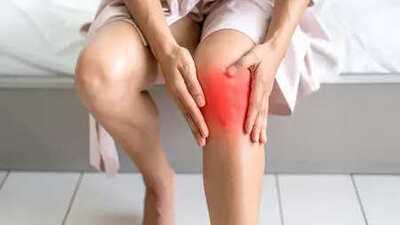
With the decrease in temperatures , most individuals with arthritis start to experience increased joint pains , stiffness and reduced movements. Winter is a season that can also be problematic when it comes to the health of the joints, whether it be with colder air, alterations in barometric pressure, or maybe even just the fact of the season and change of routine.
The good news? Arthritis symptoms in lower temperatures can be easily controlled through straightforward measures. It takes only a small number of conscious changes to your everyday routine to make your joints feel healthier and your body more robust during the winter.
1) Warmth Is Essential
The cold weather usually causes tight muscles and less pliable joints which are likely to make movement more cumbersome and cause more pain. The first weapon is to keep warm. To prevent joint stiffness, it is important to keep the joints warm before it begins. Wear warm-up clothes that do not allow heat to escape, insulated gloves and socks, and look into thermal clothing or knee or elbow warmer. At home, apply heat pads or blankets (cautiously) to apply heat to localized areas of a sore. In addition, do not cycle fast between hot and cold. Keep your house at a nice level and in case you are going out, cover yourself well.
2) Stay Active Indoors
Although it may be tempting to remain in a stationary position during winter, it is a fact that a sedentary lifestyle may only deteriorate the joint pain. The frequent joint motion is essential to the normal functioning of the joints and decreasing the rigidity. The movement is the lubricant that the joints are natural. Light stress activities like yoga, tai chi, indoor biking, or even walking may keep your joints in motion. Flexibility and the elimination of discomfort are also achieved through stretching. Aim at minimum of 15-30 min light activity per day. When you are going outside to exercise, you want to warm up first of all. Cold muscles have a higher chance of being injured and by warming up the blood moves better to allow your joints to move easier.
3) Food To Eat and Drinks To Eat
It is also easy to get into the habit of heavy and rich foods in winter, however, what you are eating can be of much effect on the arthritis symptoms. Extra weight may cause additional stress on the joints, whereas some foods may result in more inflammation. Emphasize a nutrient-dense diet that is well-balanced and has a lot of fruits, vegetables, whole grains, lean protein, and healthy fats. Add anti-inflammatory food items like fatty fish (e.g. salmon), turmeric, ginger, and green leafy vegetables. It is also necessary to stay hydrated even during winter. During cold seasons, many individuals use less water, yet the joints require fluids in order to remain soft. The herbal teas, broths and warm water are also good to keep you warm and hydrated.
4) Encourage Mental Health and Sleep.
The dark days with low length may negatively affect the mood and interfere with sleep patterns - which may increase the perception of pain and stress levels. In case of disrupted sleep, the pain will seem more severe and difficult to cope with. Attempt to stick to a normal sleeping schedule, bedtime and wake-up time every day. Always keep the screens off in the evening, and avoid stimulating the environment with minimal noise and light. During the daytime, it is possible to wake up or sleep up by being exposed to natural light, even in a few minutes. One can also relieve pain through stress-relieving methods, such as deep breathing, meditation, or mindfulness, to relax the nervous system.
5) Prevention and Protection of your joints.
Injuries can be avoided and strain on your joints can be kept to a minimum being ready in winter conditions. Arrange excursions in the hottest season of the day. Wear well tredded shoes to prevent slipping in icy or wet floors. Walking aids or supporting gear should be used when necessary. Warm your body parts up -- used gloves, heavy socks, hats to keep the body warm. Keep track of your symptoms, and maintain medication and appointments. Call your healthcare provider in case of worsening of pain or occurrence of new symptoms. The aim is to prevent the pain and stiffness through prevention measures - not waiting until pain begins to take place.
Your daily habits control your arthritis more than weather does. Although you may not be able to change the cold, you can change your reaction to it. Winter can be more comfortable and manageable by keeping warm, exercising, properly fed, and mentally healthy because it helps you cope with the symptoms of arthritis. Winter does not necessarily imply more pain. By practicing self-care regularly, and using the appropriate strategies, you can maintain joint health and body movement even in the coldest seasons.
(Dr Vaibhav Bagaria, Director, Orthopaedics & Joint Replacement, Sir H.N. Reliance Foundation Hospital)
 With the decrease in temperatures , most individuals with arthritis start to experience increased joint pains , stiffness and reduced movements. Winter is a season that can also be problematic when it comes to the health of the joints, whether it be with colder air, alterations in barometric pressure, or maybe even just the fact of the season and change of routine.
With the decrease in temperatures , most individuals with arthritis start to experience increased joint pains , stiffness and reduced movements. Winter is a season that can also be problematic when it comes to the health of the joints, whether it be with colder air, alterations in barometric pressure, or maybe even just the fact of the season and change of routine.